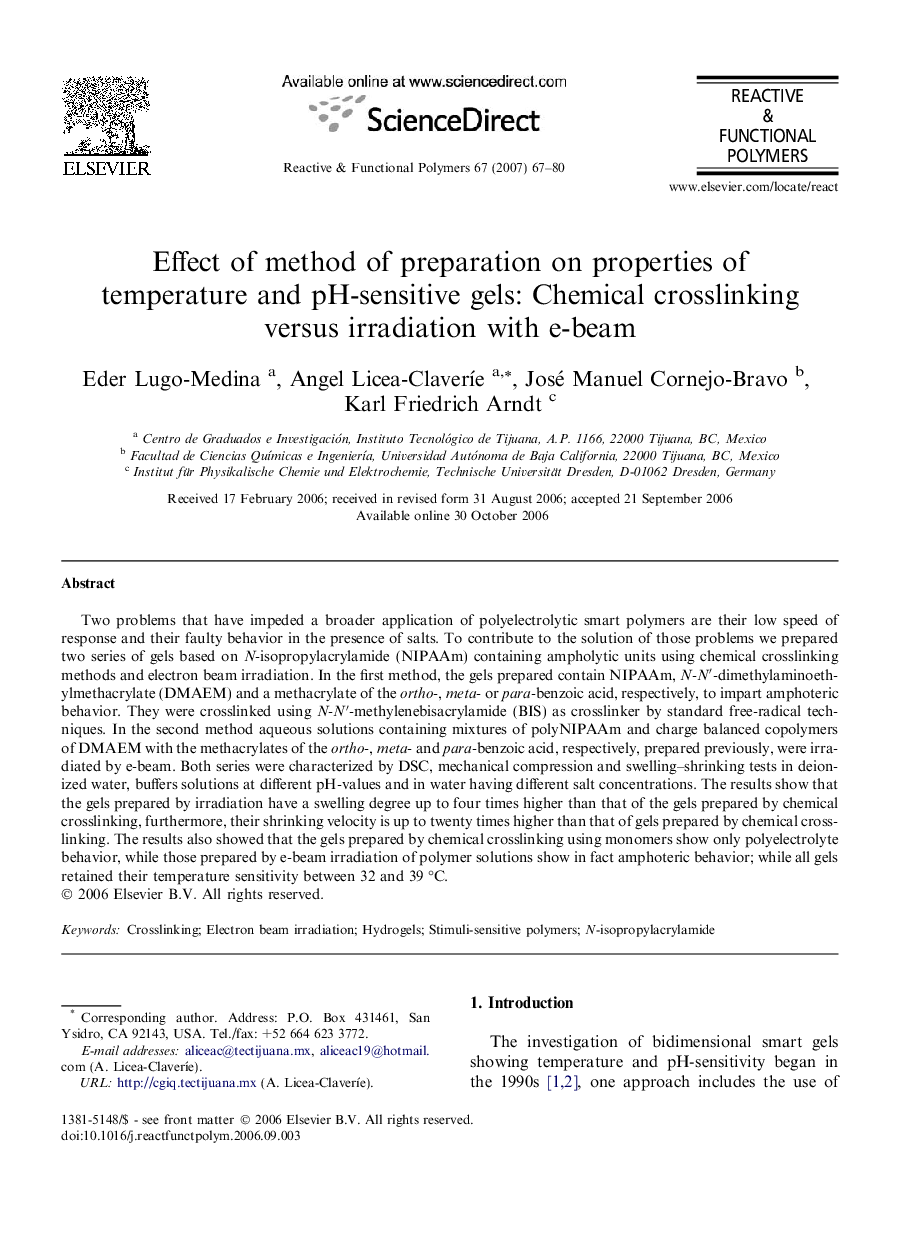| Article ID | Journal | Published Year | Pages | File Type |
|---|---|---|---|---|
| 5211450 | Reactive and Functional Polymers | 2007 | 14 Pages |
Abstract
Two problems that have impeded a broader application of polyelectrolytic smart polymers are their low speed of response and their faulty behavior in the presence of salts. To contribute to the solution of those problems we prepared two series of gels based on N-isopropylacrylamide (NIPAAm) containing ampholytic units using chemical crosslinking methods and electron beam irradiation. In the first method, the gels prepared contain NIPAAm, N-Nâ²-dimethylaminoethylmethacrylate (DMAEM) and a methacrylate of the ortho-, meta- or para-benzoic acid, respectively, to impart amphoteric behavior. They were crosslinked using N-Nâ²-methylenebisacrylamide (BIS) as crosslinker by standard free-radical techniques. In the second method aqueous solutions containing mixtures of polyNIPAAm and charge balanced copolymers of DMAEM with the methacrylates of the ortho-, meta- and para-benzoic acid, respectively, prepared previously, were irradiated by e-beam. Both series were characterized by DSC, mechanical compression and swelling-shrinking tests in deionized water, buffers solutions at different pH-values and in water having different salt concentrations. The results show that the gels prepared by irradiation have a swelling degree up to four times higher than that of the gels prepared by chemical crosslinking, furthermore, their shrinking velocity is up to twenty times higher than that of gels prepared by chemical crosslinking. The results also showed that the gels prepared by chemical crosslinking using monomers show only polyelectrolyte behavior, while those prepared by e-beam irradiation of polymer solutions show in fact amphoteric behavior; while all gels retained their temperature sensitivity between 32 and 39 °C.
Keywords
Related Topics
Physical Sciences and Engineering
Chemistry
Organic Chemistry
Authors
Eder Lugo-Medina, Angel Licea-ClaverÃe, José Manuel Cornejo-Bravo, Karl Friedrich Arndt,
